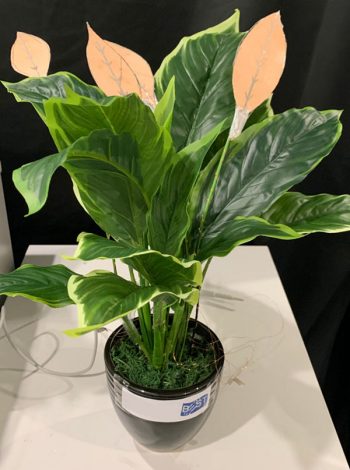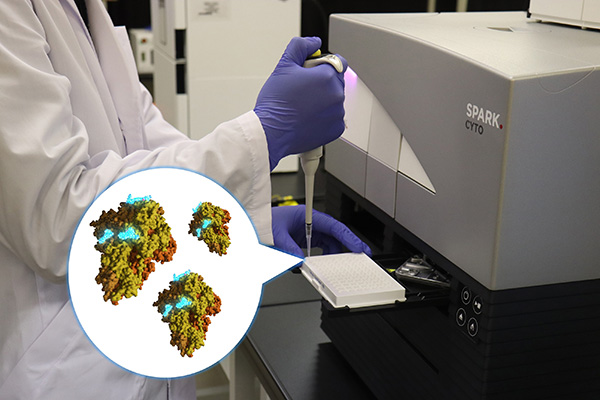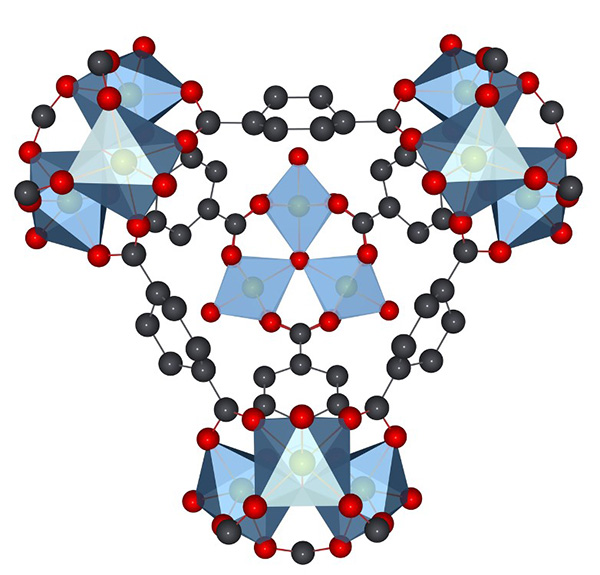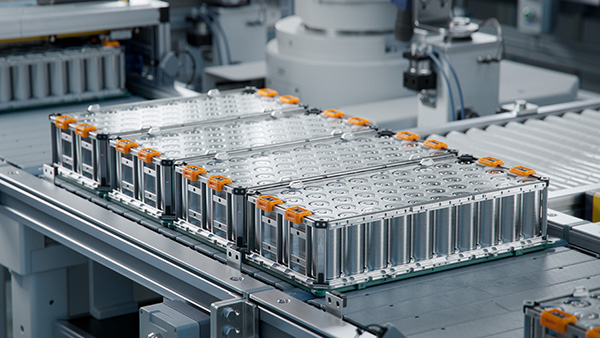FOR IMMEDIATE RELEASE
“Multisource Energy Harvester on Textile and Plants for Clean Energy Generation from Wind and Rainwater Droplets”
ACS Sustainable Chemistry & Engineering

Fake plants are moving into the 21st century! Researchers developed literal “power plants” — tiny, leaf-shaped generators that create electricity from a blowing breeze or falling raindrops — and described them in ACS Sustainable Chemistry & Engineering. The team tested the energy harvesters by incorporating them into artificial plants.
Electrical energy can be produced from nature in several ways. For example, solar panels convert light energy from the sun, and wind turbines transform the kinetic energy of moving air. But these methods typically rely on a single source and therefore are only effective when that source is available. Solar panels don’t work after sunset, for example, and a calm day won’t generate much wind power. More recently, multi-source energy harvesters have emerged as a method to capture energy from different renewable sources in one device, maximizing potential output. So, Ravinder Dahiya and colleagues wanted to create a multi-source energy harvester that could generate power from both wind and rain.
The team built two different types of energy collectors: a triboelectric nanogenerator (TENG) to capture kinetic energy from the wind and a droplet-based energy generator (DEG) to collect energy from falling raindrops. The TENG consisted of a layer of nylon nanofibers sandwiched between layers of polytetrafluoroethylene, more commonly known as Teflon™, and copper electrodes. When the layers pressed into each other, static charges were generated and converted into electricity. Teflon was also used to make the DEG, which was waterproofed and covered with a conductive fabric to act as the electrodes. As raindrops hit one of the electrodes, it caused an imbalance in charges, generating a small current and high voltage. Under optimal conditions, the TENG produced 252 volts and the DEG 113 volts, but only for short periods of time.
The team mounted the DEG atop the TENG and incorporated leaf-shaped versions into an artificial plant. When the leaf-shaped generators were exposed to conditions mimicking natural wind and rain, they powered 10 LED lights in short flickers. This proof-of-concept “power plant” device could be further developed into larger systems or networks of power plants to produce clean energy from natural sources, the researchers say.
The authors do not acknowledge a funding source for this work.
###
The American Chemical Society (ACS) is a nonprofit organization chartered by the U.S. Congress. ACS’ mission is to advance the broader chemistry enterprise and its practitioners for the benefit of Earth and all its people. The Society is a global leader in promoting excellence in science education and providing access to chemistry-related information and research through its multiple research solutions, peer-reviewed journals, scientific conferences, eBooks and weekly news periodical Chemical & Engineering News. ACS journals are among the most cited, most trusted and most read within the scientific literature; however, ACS itself does not conduct chemical research. As a leader in scientific information solutions, its CAS division partners with global innovators to accelerate breakthroughs by curating, connecting and analyzing the world’s scientific knowledge. ACS’ main offices are in Washington, D.C., and Columbus, Ohio.
To automatically receive press releases from the American Chemical Society, contact newsroom@acs.org.
Note: ACS does not conduct research, but publishes and publicizes peer-reviewed scientific studies.







